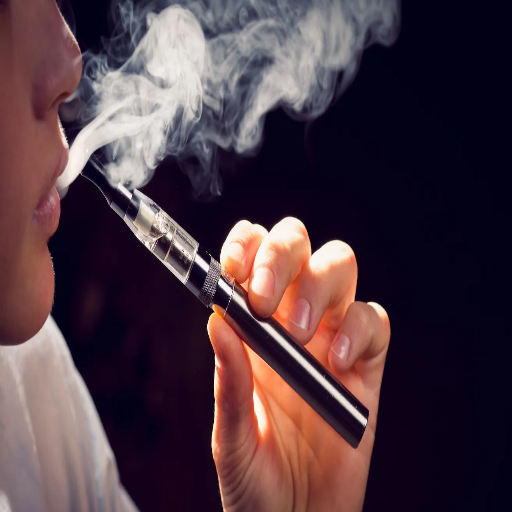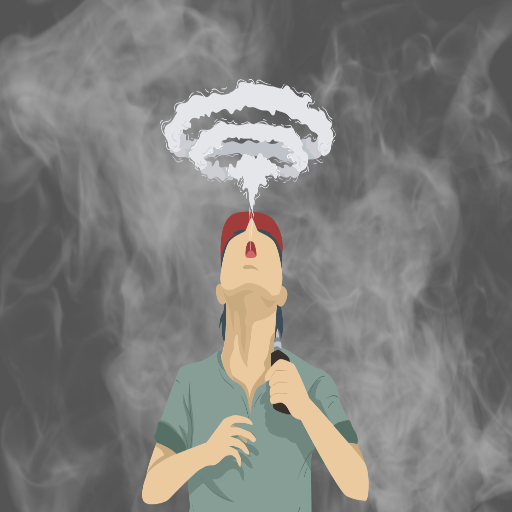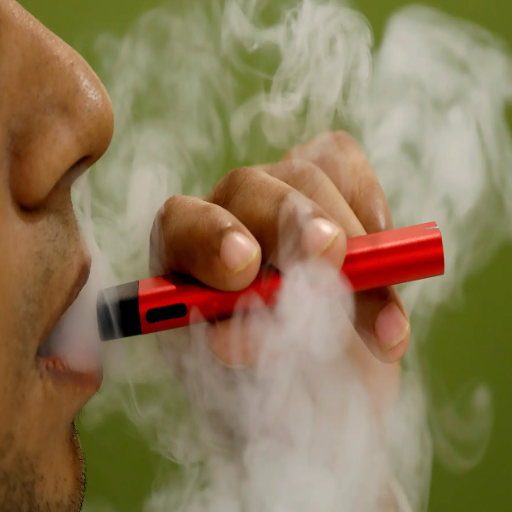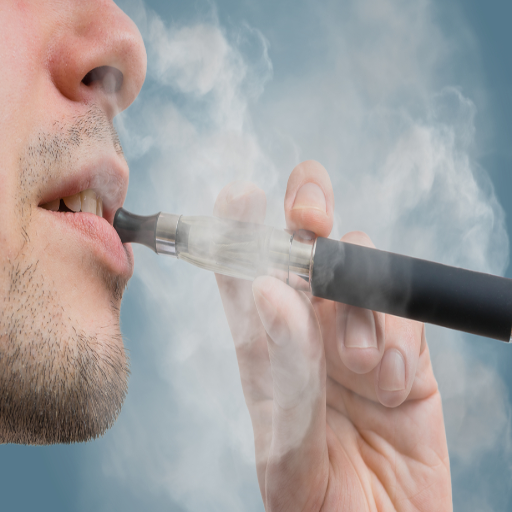Vaping, often promoted as a safer alternative to traditional smoking, has gained widespread popularity in recent years, particularly among younger demographics. This phenomenon raises critical questions about its impact on public health, addiction rates, and long-term consequences. Understanding the health effects of vaping requires a detailed examination of its chemical components, the physiological changes it induces, and how it compares to conventional tobacco products. This article seeks to provide a comprehensive, evidence-based overview of e-cigarette use, dissecting its immediate and potential long-term outcomes, regulatory challenges, and implications for both individuals and broader healthcare systems. Through a technical yet accessible analysis, we will explore what current research reveals about vaping and its multifaceted role in modern society.
What is Vaping and How Does it Differ from Smoking?

How E-Cigarettes Create an Aerosol
E-cigarettes produce an aerosol through a process called aerosolization, where a liquid usually known as vape juice or e-liquid is transformed into vapor by a metal coil heater. However, this aerosol is not a true vapor, which is a gas phase. Instead, it contains small particles of liquid and solid suspended in the air.
- Battery: Supplies electrical energy to the coil to get it heated up. Most devices fall within a voltage range of 3.3 to 4.8 volts depending on the design.
- Coil/Heating Element: Transforms electrical energy into heat energy. Typical coils have a resistance of 0.5–2.0 ohms depending on whether the device is sub-ohm or standard. Lower resistance coils increase heat, which increases aerosol production.
- E-Liquid: This is made from a mixture consisting of a base solution like propylene glycol(PG), vegetable glycerine (VG), flavoring agents, and sometimes nicotine. These base solutions consist of 90-95% of the mixture. The PG and VG ratio has a major influence on the aerosol characteristics. More VG creates denser clouds and more PG improves flavor.
- Wick: The wick is usually made from cotton. It delivers the e-liquid to the coil ensuring consistent aerosol production.
Once the user turns on the device, the battery heats the coil to a range between 200 to 250 degrees Celsius (392 to 482 degrees Fahrenheit). The heating element vaporizes the liquid e juice into water-like particles which are then inhaled by the user. Also, there is a possibility that the higher temperatures will thermally decompose the components of the e-liquid and create harmful byproducts, including formaldehyde and acetaldehyde, under some situations.
Vaping vs. Traditional Cigarette Smoking
Examining vaping and traditional cigarette smoking from a comparative view, both mechanisms and their associated health effects are notably different. Traditional cigarettes work by burning tobacco at high temperatures ((over 800 degrees Celsius or 1472 degrees Fahrenheit)), which creates tar and thousands of harmful byproducts such as carbon monoxide and benzene. Vaping, on the other hand, heats e-liquid at much lower temperatures ((200 to 250 degrees Celsius or 392 to 482 degrees Fahrenheit)), thus creating an aerosol with fewer harmful substances.
The fundamental difference is in the vaping devices where ‘combustion’ does not happen. Combustion leads to the oxidation of organic molecules which can be carcinogenic. For e-cigarettes, the vaping process leads to the minimal presence of harmful by-products, although ‘thermal decomposition’ can still happen where substances like formaldehyde and acetaldehyde are generated.
In a traditional cigarette, nicotine is released at a rapid and potent pace due to the efficiency of combustion. On the other hand, vaping provides the user with controllable levels of nicotine based on the e-liquid composition. It is suggested that vaping has the potential to provide nicotine in less concentrated forms depending on the preference of the user, such as 3mg/mL or 6mg/mL, allowing for more flexibility.
That said, even though vaping presents a less harmful option than traditional smoking, it still has the propensity to inflict some level of damage. Greater regulation over e-liquids and careful control of device settings is important to minimize adverse effects and ensure safer outcomes.
Are E-Cigarettes Less Harmful than Smoking?

Exploring the Health Effects of Vaping
To understand the e-cigarette phenomenon properly, it is crucial to examine its bearing on health. From a mechanical point of view, e-water pipes bar the combustion process involved in traditional smoking, which is responsible for creating toxic byproducts of smoking, like tar and carbon monoxide. Blowing off steam nicotine-infused propylene glycol, glycerin, and flavorings is done instead by warming e-liquids.
However, the absence of risk does not mean incurred damage. Studies suggest that rotary exposure to vaporized chemicals translated could translate within their airways as respiratory irritation and inflammation. Overheating the e-liquid past 250 degrees Celsius for instance may produce formaldehyde, which is a damaging compound. In addition, high concentrations of nicotine (e.g., above 18mg/mL) greatly increase the tendency of dependence for inexperienced users.
Providing support for these claims means full regulation of e-liquid components and accurate control of the device are synthesized. For instance, controlling the wattage on low-powered devices between 10-30W while incorporating temperature control mechanisms can reduce the generation of harmful substances. While e-water pipes continue to be viewed as a harm reduction tool, more long-term studies are needed for their full understanding.
What Vaping Exposes Users To
In my examination of the health risks associated with the use of vaping devices, several technical details deserve attention. Primarily, to start, the aerosol emitted by vaping devices includes many components, including nicotine which is one of the most significant parts of the aerosol. Propylene glycol, vegetable glycerin, and nicotine are also found as base liquid constituents. While these substances are considered safe when consumed or applied to the skin, they may produce dangerous chemicals when exposed to heat such as formaldehyde or acrolein. Research shows that devices functioning at temperatures exceeding 250 degrees Celsius produce formaldehyde and acrolein in greater concentration than lower-grade devices, which is a clear strain on health for a regular user of vaping devices.
Next, ingredients of concern can also be found within e-liquids or e-mods such as diacetyl, which is known to potentially cause serious medical conditions such as bronchiolitis obliterans when inhaled over a sustained duration. Thus, enhancement of restraint procedures and more testing are very important to augment where and what measures unsafe flavoring substances can be used.
Last but not least, the elements of e-cigarettes enable a wide spectrum of health complications not devised from legal smoke to be inhaled where around for detection of unwanted substances as nuisances smoke tends to be inhaled. Where the majority of them stem from the construction pieces used as the device’s heating parts. As for prolonged periods of contact with these devices where lead, nickel, and chromium are but a few of the heavy metals that have been found within the e-cigarette aerosol. Regulations must focus on limits to emission of aerosols which deliberately compromise using devices such as schools where less than 0.1 mg of lead per puff in need is acceptable.
Finally, long-term usage can result in particulate matter from vaporized solutions coagulating in the lungs, which can influence their overall health. To reduce these risks, factors like liquid composition, operating voltage (ideally between 3.0-4.8 V), and power output should be focused on and controlled.
The Role of Nicotine in E-Cigarettes
Nicotine acts as the leading psychoactive compound in e-cigarettes and affects the user’s physiological response as well as the addiction potential of these devices. In e-liquids, nicotine concentration typically ranges from varying values below 0 mg/mL to above 50 mg/mL. Higher concentrations are aimed to replicate the nicotine delivery systems of traditional cigarettes. For pod-system e-cigarettes, nicotine salt formulations are commonly used. They are more efficient in nicotine absorption because of the lower pH which reduces throat irritations at high concentrations.
From a technical point of view, some aspects of device features such as power output, liquid formulation, and atomizer resistance influence the absorption of nicotine. Devices working at higher power outputs of 10-20 W and lower resistance coils of less than or equal to 1.0 Ω are capable of aerosol volume production. With each puff, more nicotine is delivered. Similarly, aerosol particle size has an approximate range of 0.1 µm to 3.0 µm and affects the rate of respiration and absorption.
- Nicotine Concentration: Standard freebase e-liquids have a range of 0-24 mg/mL, while high-absorption nicotine salts tend to exceed 50 mg/mL.
- Operating Voltage and Wattage: The ideal vaporization without thermal damage range is set at 3.3-4.2 V and 10-20 W respectively.
- Atomizer Resistance: Values that are lower than 1.8 Ω and higher than 0.6 Ω are termed resistance values, where lower resistance improves aerosol production.
- Aerosol Particle Size: The most effective way to deliver nicotine is through a dosage form that allows effective deposition in the airway and is characterized by optimal particle size distribution.
All these factors and their interplay have to be rigidly controlled to ensure the most positive user experience, the least required risks, and compliance with regulations.
Why is Vaping Becoming Popular Among Youth?

The Appeal of Vaping Flavors
In my understanding, those interested in vaping enjoy its flavors due to their variety and their capacity to imitate familiar tastes. Flavor categories like fruits, candies, and desserts tend to enjoy popularity among the younger age groups because they are sweetened and thus tend to be less regarded in comparison to other tobacco products. For example:
- Flavor Stability: Fulfilling statements ensure that during the heating process, the flavors do not break down into certain harmful byproducts that would be toxic.
- Optimal Heating Range: The active middle of the working range for most devices is 180-220° C, which enables the non-destructive alteration of complex organic molecules that are part of the flavor aromas.
- Flavor Intensity Balancing: The mixture used for flavoring is used in such proportions that practically all active receptors are captured without causing harm or irritation to the breathing organs.
It is clear from these explanations that the technical aspects of vape devices significantly impact the quality and safety of the products while helping understand the strong appeal of vaping.
Insights from the National Youth Tobacco Survey
Meanwhile, the survey reveals an increasing trend in adolescent e-cigarette use, particularly with flavored e-cigarettes, where adolescents point to variety in flavors as the primary reason for initial and continued use.
- Flavor Chemistry: The chemistry behind the e-liquid flavors is simply the fabrication of organic materials that serve to appeal to the targeted demographic unlike using diacetyl and its harmful sources.
- Aerosol Particle Size: The device is designed to transform liquids into aerosols for nicotine delivery. The efficiency of the device is determined by optimal nicotine secretion particle size of 1-5 micrometers which poses minimal respiratory soreness.
- Device Usability: E-cigarettes can be easily used due to the lack of a need for user experience. Automatic activation and wattage adjustment as well as temperature setting allows the settings to cater to novices.
That effective device construction, which features and caters to novice users, is the reason for the increase in youth vaping, meaning the construction leaves much to be desired regarding health safety.
The Influence of Social Media on Vaping Trends
Social media is a strong contributor to vaping trends in younger populations. They focus on well-designed devices containing diverse flavors and normalize or glamorize the act of vaping.
- Device Customization and Aesthetics: Young patrons are typically more individualistic and self-expressive and thus, would want to vape sleek modern e-cigarettes that can be customized.
- Flavor Varieties: Content creators often highlight a plethora of flavor options ranging from fruity to desserts and mint that specifically target a younger demographic.
- Ease of Access: Social media marketing as well as online promotions circumvent brick-and-mortar restrictions making these devices accessible via the internet.
- Content Algorithm Dynamics: Social algorithms push viral content to the public without age-restricting certain information ranging from masculinity to smoking, ensuring vaping posts go viral.
To address the issue of vaping, there needs to be an effort to regulate and put forth digital advertising policies, moderation of the content, and advertisements concerning the health consequences that come with vaping.
Is Nicotine in E-Cigarettes Addictive?

Understanding Nicotine Addiction
The reason that most people get addicted to nicotine is because of the brain’s reward system. When taking nicotine from e-cigarettes, the substance is taken through the lungs. This allows the nicotine to enter the bloodstream and reach the brain within 10 to 20 seconds. While in the brain, it binds itself to the nicotinic acetylcholine receptors and subsequently releases dopamine into the blood. The neurotransmitter dopamine is associated with pleasure and reinforcement. This sets up a positive feedback loop of craving and reward that maintains the addiction.
- Absorption Rate: As a result, addicted smokers and e-cigarette users are capable of obtaining access to nicotine dopamine more easily which circulates to the lungs. This part alone makes it more difficult to withstand the craving.
- Receptor Binding: Dependency is caused as Nicotine has a direct impact on the nicotinic acetylcholine receptors because of the change it affects on neural circuits.
- Neurotransmitter Activity: Repetition of the act is most likely, especially when there is some form of pleasure, for example, dopamine removal.
These factors explain why many people become addicted to e-cigarettes. Their new designs coupled with behavioral addiction certainly need some form of policy to prevent an issue of chronic dependency.
Differences Between E-Cigarettes and Other Tobacco Products
The form of e-cigarettes and the traditional use of tobacco bear stark differences in their composition, the way they operate, and the health risks involved. E-cigarettes rely on a liquid that contains nicotine, flavorings, and some other chemicals. The liquid is heated to a point that forms an aerosol that the e-cigarette user inhales. This action does not have combustion, which is a characteristic of cigarettes, cigars, and pipes. These traditional products burn shredded tobacco and in the process create Tar and thousands of harmful chemicals, both encouraging and aiding cancer formation.
- Nicotine Delivery: E-cigarettes are a more controlled dosage method due to their adjustment capabilities, ranging from 0mg/mL to 50mg/mL in products like nicotine salts. Traditional tobacco products are less controlled due to the burning rate deficiencies.
- Chemical Exposure: E-cigarettes pose less risk of toxicant exposure to users compared to traditional cigarettes. However, e-cigarettes still release harmful substances such as formaldehyde and acetaldehyde, albeit at minute levels. Cigarettes, in contrast greatly increase the risk of tar, benzene, and carbon monoxide poisoning.
- User Experience: The e-cigarette smoker’s habit of bringing the aid into their mouth imitates smoking, but without the odoristic aspects; some people consider this to be socially acceptable. Traditional tobacco products always come with a peculiar and pungent smoke.
Such differences point out the varying effects these products have on health and the contexts within which it is used. Developing regulations that target specific issues should, however, be cognizant of the subtleties and intricacies of both categories to mitigate public health problems.
Can Vaping Help You Quit Smoking?

Examining the Role of E-Cigarettes in Smoking Cessation
Although e-cigarettes are marketed as a viable solution for smoking cessation, the evidence is not consistent and effectiveness varies between users. E-cigarettes’ potential role in smoking cessation can be understood through the lens of nicotine replacement therapy. Many e-cigarette devices allow users to control the nicotine concentration in the e-liquid which can range from 0mg/mL to over 50mg/mL. With this flexibility in dosing, some individuals may be able to decrease their nicotine dosage over time.
Nonetheless, this method poses some limitations and concerns that need to be stated. For instance, studies have shown that e-cigarettes are often used within a dual purpose which means some people will continue to smoke traditional cigarettes while vaping, putting their health at risk. Furthermore, the health effects of e-cigarettes after prolonged exposure are not very well studied which clouds the justification for their use as a safer method.
To answer the question succinctly, e-cigarettes might have the potential to aid some individuals in smoking cessation through controlled nicotine dosing; however, their overall effectiveness highly depends on the user’s behavior, willingness to quit, and some regulatory intervention to protect them from misuse.
Challenges of Dual Use of E-Cigarettes and Cigarettes
The combination of e-cigarettes and combustible cigarettes poses great difficulty for people trying to minimize their smoking behavior or quit altogether. First, dual-use often negates the possible harm reduction that can result from switching to e-cigarettes. Regular cigarettes continue to contain multi-ill properties such as tar and carbon monoxide that raise the threat level of smoking. Even in moderation, these products pose significant health risks, but when consumed together, they can significantly worsen the outcome health-wise.
From the latest research, one of the additional does of nicotine “evaporating” them holds the potential to depend on multi-usage as a means of combined access smoking. Adopters of multi-use tend to view this technique as a step-down effort to quit smoking, however, its greater stay provides the danger of non-completion. Furthermore, nicotine debilitates greater damage having dependence through a multitude of control habits working simultaneously ‘double hit’.
Dual use, in my opinion, is one obstacle that stands in the way of quitting smoking altogether. Even though e-cigarettes are available with a nicotine concentration of 0 mg/mL to over 50 mg/mL (usually in the form of nicotine salts for higher absorption), quitting smoking entirely still needs an unwavering plan. If traditional cigarettes continue to be consumed without thoughtful moderation, the harm reduction efforts that e-cigarettes promise are highly likely to fail. These patterns need to be attended to in the regulations to suppress dual-use and foster single-product use cessation approaches that will help decrease the health risks more effectively.
Reference sources
Frequently Asked Questions (FAQs)
Q: What are the main health effects of using e-cigarettes?
A: E-cigarettes, also known as vapes or electronic nicotine delivery systems, can have various health effects. The Centers for Disease Control and Prevention (CDC) states that e-cigarette use can expose users to harmful substances, including nicotine, which is highly addictive.
Q: Is vaping safer than smoking cigarettes?
A: While vaping doesn’t produce many of the harmful chemicals found in cigarette smoke, it is not without risks. Vaping can still expose users to nicotine and other potentially harmful substances, and the long-term effects are still being studied.
Q: Can secondhand vape exposure affect non-vapers?
A: Yes, secondhand exposure to vape aerosols can occur, and while it might not be as harmful as secondhand smoke from traditional cigarettes, it can still expose non-users to nicotine and other chemicals.
Q: How does e-cigarette use among adolescents impact their health?
A: E-cigarette use among middle and high school students has been rising, which is concerning because nicotine can harm adolescent brain development. It can also lead to addiction and increase the likelihood of using other tobacco products.
Q: What are some common vaping myths?
A: Common vaping myths include the belief that vaping is completely safe, that it doesn’t lead to nicotine addiction, and that it is an effective way to help smokers quit. While vaping can be less harmful than smoking, it is not without risks and is not approved by the Food and Drug Administration (FDA) as a smoking cessation tool.
Q: What substances in vapes are harmful?
A: Vapes can contain harmful substances such as nicotine, heavy metals, volatile organic compounds, and flavoring agents like diacetyl, which are linked to lung disease.
Q: Are there any long-term studies on the effects of vaping?
A: As vaping is relatively new, long-term studies are still ongoing. However, a recent study found that vaping can cause lung and cardiovascular issues, similar to those caused by smoking cigarettes.
Q: Can vaping help cigarette smokers quit?
A: While some people who use e-cigarettes report a reduction in cigarette consumption, vaping is not formally recognized by health authorities like Johns Hopkins Medicine or the CDC as an effective smoking cessation method.
Q: What should I do if I want to stop vaping?
A: If you’re looking to stop vaping, you’re not alone. Many resources are available, including counseling and cessation programs. Consulting healthcare professionals can provide guidance and support for quitting.







